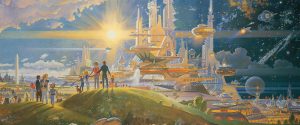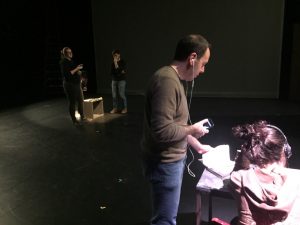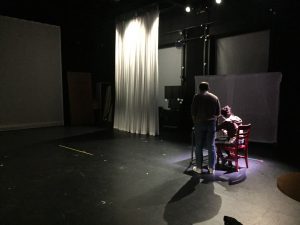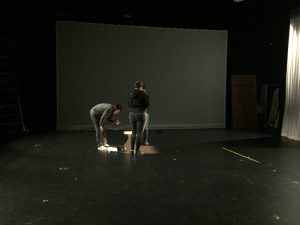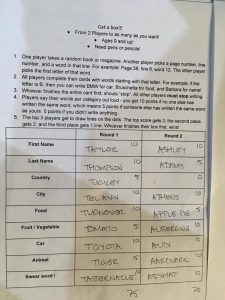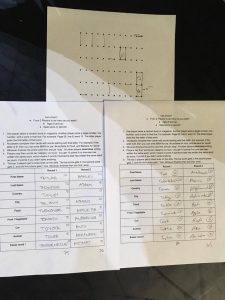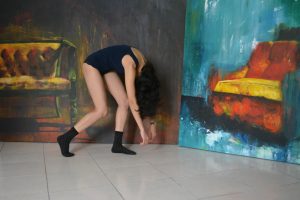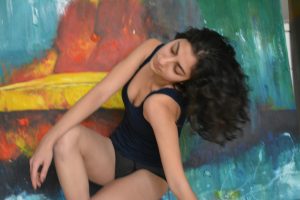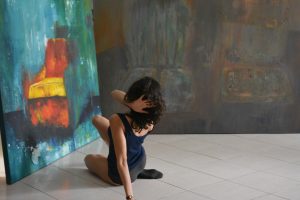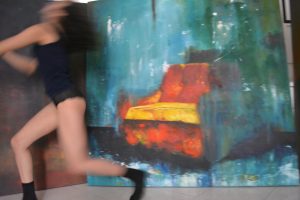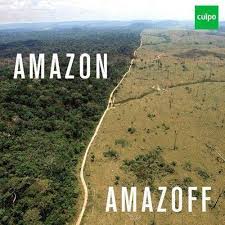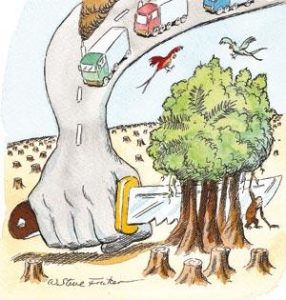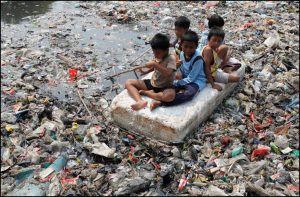Pressure Project 3: Trailblazing
Posted: December 4, 2017 Filed under: Calder White, Paper & Pen, Pen and Pencil Games, Pressure Project 3, Uncategorized Leave a comment »For our third Pressure Project, our prompt was to take a pen & paper game and combine it with another game to make a delightfully replayable hybrid that had no more than 5 rules and did not require the creator’s verbal or gestural intervention. I love to play card games, and especially drinking games involved with cards, and so I decided to figure out a way in which I could revamp one of my favourite drinking card games — Ride the Bus — to suit this assignment.
For those who don’t know, Ride the Bus is a drinking game played with two people. The dealer lays out five cards and flips the first one. The second player then goes through a sequence of questions guessing the nature of the proceeding cards in this order:
- Is the second card higher or lower than the first card?
- Is the third card inside of (between) or outside of the first two cards?
- Is the fourth card red or black?
- What is the suit of the last card?
The catch is this: if at any point the second guesser makes an incorrect guess, they have to take a drink, a new set of five cards is dealt, and the game restarts. The player only wins once they “ride the bus” to the end.
Taking some inspiration from tic-tac-toe and Connect 4, I was curious about how Ride the Bus could function if placed in a grid. I decided that the cards would be set up in a 5×5 grid and this would become a game about which player — the dealer or the guesser — could collect the most cards by the end. Instead of having to drink for guessing a card incorrectly, an incorrect guess simply signaled the end of a player’s turn and therefore a stunted chance at collecting more cards.
The instruction sheet of my hybrid game can be found here: ACCADTrailblazing
In the end, this game reminded me a lot of afternoon’s spent at my Baba’s house playing War for hours. Although perhaps not the most stimulating for adults, Trailblazing could easily be an entertaining children’s or family game, and definitely gets more fun the more you play it!
Cycle 1 Presentation – here4u
Posted: November 28, 2017 Filed under: Calder White, Final Project, Uncategorized Leave a comment »For my final project in DEMS, titled here4u, I’m working to tell a non-linear narrative about a long distance platonic relationship between a mother and a son. The story is told mainly through text messages, voicemails, and journal entries and photographs (both physical and digital), unlocked via QR codes scattered throughout the installation. My inspiration comes from an extremely personal place as I have been in this very situation for the past four years of my undergraduate career, and my drive for this project stems from an artistic desire for transparency between creator/performer and the audience. Through this project, I am opening myself up to the audience — using actual voicemails and texts between my mother and I and actual entries from my journal — to tell a story about distance, loneliness, belonging, misinformation, struggle, and coming of age. I am doing all of this in the hopes that my “baring it all” can open a dialogue about connection and relation between myself and the people experiencing this installation, as well as between the visitors to the space.
In the first cycle presentation, I organized two desk spaces diagonal to each other in the Motion Lab, one being the “mother” space and the other being the “son” space. The mother space has various artifacts that would be found on my mom’s desk at home: note pads with hand-written reminders, prayer cards and rosaries from my Baba, and a film photograph from the cottage that my mom and I used to live in. Spread within the artifacts are QR codes that include worried voicemails from my mom about suspicious activity on campus, texts from her to me asking where I’ve been, and links to screen recordings of our longer text conversations.
Across the room stands the son space, a much less organized desk with worn and filled daily planners, books dealing with citizenship theory, journals open to personal entries, and crumpled to-do lists. The QR codes here lead to first-person videos of protests, an online gallery of silhouetted selfies, and voicemails apologizing for taking so long to respond to my mom.
In the creation of this project, I am dredging up a wealth of emotions from my time in Columbus and pinning it to a presentation that I hope won’t feel like a performance. That being said, I realize that in it’s presentational nature, there are certain theatrical elements that need to be considered and addressed. With the first cycle showing, I learned very quickly how individual an experience this is. In order to get the most out of the QR codes — particularly the voicemails — the audience members must wear headphones, which immediately isolates them into their own world and deters connection with other audience members during their experience. In my attempt for creating a feeling of loneliness, I would say this was a success.
I received a wealth of feedback on which aspects of both spaces worked and which didn’t, and agreement on the most powerful aspects of the story-telling being the voicemails and texts was unanimous due to the emotion heard in the voice. At the suggestion of Ashlee Daniels Taylor, I will be working to generally increase the amount of material in the space so that there is more to look through and find in the QR codes. This works towards another one of my goals with the narrative, which is to engender the sense of a story without the need for the audience member to find every single piece of the puzzle, amplifying individual experience within the installation.
For my second cycle, I have been working towards the generation of more material to be found and directing the experience moreso than in my first presentation. Without any sort of guidance using vocal, lighting, or other cues, the first presentation invited viewers to find their own way through the installation which, although was fun for me to watch and hear how different people pieced together the experience for themselves, led to awkward successive QR codes (being too similar or repetitive), a desire for more direction, and an undefined ending to the experience. I will be working with some theatrical lighting to guide the viewers in a more predetermined path through the space.
The emotional feedback that I received after the first presentation has inspired me to push forward with this project’s main intentions and to develop this experience has honestly and authentically as possible. The tears and personal relations shared in our post-presentation discussion proved to me the value in making oneself vulnerable to their audience and I intend to lean into this for the second cycle presentation.
Pressure Project 3
Posted: November 7, 2017 Filed under: Kelsey Gallagher, Uncategorized Leave a comment »I was super excited to do pressure project 3. I have a lot of background in playing tabletop/board games so I found this only challenging in the limitations. I knew immediately I wanted to use a game my friends and played many times, which is similar to pictionary and telephone mixed together. I just needed to find another game to meld with it. I knew, because of my large collection of dice, I wanted to use dice.
I did a bunch of google searches and pintrest searches for dice games. After reading 3 or 4 I found gambling game that was interesting and alterable.
Then I just let my own creative juice run to create a narrative story that involves both of those two games.
This was the final project.
The Unfortunate Adventurers and the Wishing Well
Kelsey Gallagher
Pressure Project 2: The Tell Tale Heart
Posted: November 7, 2017 Filed under: Kelsey Gallagher, Uncategorized Leave a comment »Pressure Project 2
So for this project my personal goal was to pull a physical response from my audience. I chose Edgar Allan Poe’s Tell Tale Heart because it is one of my most favorite stories from my childhood. It also is a story that is easily told with just audio. My first choice was to try and tell The Tale of the Beetle and the Bard story of the three brothers, but the concept was frustrating so I chose to switch stories.
I first scoured the internet for a creepy underscore that could set the tone of the minute piece. Eventually I found on I liked and I exported it.
After finding this I used FreeSound.org to find the correct sound effects to create the experience. Through the use of Audacity software I created one file that told the story.
This the end product.
Kelsey Gallagher
Pressure Project 3: Pen&Paper Game
Posted: November 2, 2017 Filed under: Bita Bell Leave a comment »Get a box!!!
- From 2 Players to as many as you want!
- Ages 9 and up!
- Need pens or pencils!
- One player takes a random book or magazine. Another player picks a page number, line number, and a word in that line. For example: Page 56, line 8, word 12. The other player picks the first letter of that word.
- All players complete their cards with words starting with that letter. For example; if the letter is B, then you can write BMW for car, Bruschetta for food, and Barbara for name!
- Whoever finishes the entire card first; shouts “stop”. All other players must stop writing.
- Players say their words per category out loud – you get 10 points if no one else has written the same word, which means 5 points if someone else has written the same word as yours. 0 points if you didn’t write anything.
- The top 3 players get to draw lines on the dots. The top score gets 3, the second place gets 2, and the third place gets 1 line. Whoever finishes their box first, wins!
Instructions:
Context:
According to wikipedia, examples of Pen & Paper Games include ” Tic-tac-toe, Sprouts, and Dots and Boxes. Other games include: Hangman, Connect 5, M.A.S.H., Boggle, Battleships, Paper Soccer, and MLine.”
Assignment:
Choose a known (at least to you) pen & paper game*.
Combine it with another game. The second game can be another pen and pencil game, a card game, a dice game, or a interactive projection.
You have no more than 5 hours to complete this project. (Not including research.)
*Please feel free to keep things simple. Yet, here are some more adventurous examples:
- http://zenseeker.net/BoardGames/PaperPenGames.htm ,
- http://www.thegamesjournal.com/articles/GameSystems4.shtml,
Basic Limitations:
- new game can have no more than 5 rules
- a novice player must be able to play without your verbal or gestural intervention. (provide an instruction sheet with the rules.)
Basic Level 3 Achievements:
- Fun to play
- Game is delightfully repayable
Cycle 1 Reflection Post
Posted: November 2, 2017 Filed under: Bita Bell | Tags: Contemporary Dance, Digital Performance, Interactive Media Leave a comment »For my DEMS final project, I am working on recreating an improvisation that happened in december 2017 in Tehran at the apartment of Iranian female painter, Oldooz. On that day, I was improvising with sensations, textures, colors, lines, and moods of her large painting series called Loneliness. In this project, I am interested in translating my movement investigation with the painting into an interactive installation in which the audience explores different aspects of the painting. I am also researching my memory of that improvisation as well as using photographs as a source to choreograph a solo.
Photographs taken by Oldooz, December 2017, Tehran, Iran.
Cycle 1 deadline pressured me to choose my setting for projection and performance. I decided to use the ceiling projector, projecting to a transparent white cloth screen in dimensions close to the actual real life painting.
PP3 – Aut ’17
Posted: October 10, 2017 Filed under: Uncategorized Leave a comment »
Pen & Paper + (LEVEL 3 Pressure Project)
Context:
According to wikipedia, examples of Pen & Paper Games include ” Tic-tac-toe, Sprouts, and Dots and Boxes. Other games include: Hangman, Connect 5, M.A.S.H., Boggle, Battleships, Paper Soccer, and MLine.”
Assignment:
Choose a known (at least to you) pen & paper game*.
Combine it with another game. The second game can be another pen and pencil game, a card game, a dice game, or a interactive projection.
You have no more than 5 hours to complete this project. (Not including research.)
*Please feel free to keep things simple. Yet, here are some more adventurous examples:
- http://zenseeker.net/BoardGames/PaperPenGames.htm ,
- http://www.thegamesjournal.com/articles/GameSystems4.shtml,
Basic Limitations:
- new game can have no more than 5 rules
- a novice player must be able to play without your verbal or gestural intervention. (provide an instruction sheet with the rules.)
Basic Level 3 Achievements :
- Fun to play
- Game is delightfully repayable
Legendary Achievements:
- includes a plot driven narrative
- includes an interactive projection
Audio Urban Legend
Posted: October 9, 2017 Filed under: Calder White, Pressure Project 2 Leave a comment »Our second Pressure Project challenged us to tell a narrative using audio as the star of the show. This narrative could be in any form, and at the recommendation of telling an urban legend, I was inspired to make a sound score of a classic urban legend that I used to hear at ~literally~ every bonfire of my childhood.
The urban legend takes many forms, but it generally involves a couple driving out to a make-out point only to be interrupted by a serial killer with a hook hand. With this narrative in mind, I started to rummage through FreeSounds.org for the meat of my story, and once I had found them I layered the audio using GarageBand. By using a grab-bag of sounds from different user sources on the website, I felt as though I was embracing the piecemeal nature of urban legends to shift over time and space — how the same urban legend can have slightly different details depending on who tells it.
Working with the one-minute time constraint was the mos
t difficult part of this project, particularly because this specific urban legend sources it’s fear from the loneliness and uncanny duration of the girl’s wait in the car after her boo has excused himself for a pee break. The story thrives off of the building of tension, and this is hard to do in such a short amount of time. In an attempt to remedy this constraint, I experimented with volume and panning of the tracks as well as cross-fading to elude to the idea of time passing. With more than five hours, I think I could have done a better job of this.
Similarly, I think that I could have clarified the latter half of the score better as it left many people confused and left the story unresolved for some. I was referencing this version of the urban legend (told at the 47 second mark):
…but some versions of the story that others in the class had heard either didn’t end this way or ended slightly differently. The pros and cons of the fluidity of these urban legends…
Feel free to check out the audio narrative by clicking here and please comment with any suggestions you might have for me to improve upon this project!
Pressure Project #2: Alligators in the Sewers!
Posted: October 8, 2017 Filed under: Uncategorized Leave a comment »This audio exploration is designed to evoke sensation through sound in a whimsical way. Working from the myth of the alligators who live in the New York City subway system, I sketched out a one-minute narrative encounter that would be recognizable (especially to a city-dweller), a little creepy, and just a bit funny.
- A regular day on a busy New York City street
- The clatter of a manhole cover being opened
- Climbing down into the dark sewer
- Walking slowly through the dark through running water (and who knows what else)
- A sound in the distance . . . a pause
- The roar of an alligator!
Assembling these sounds was simply a matter of scouring YouTube, but mixing them proved to be a bit more challenging. I layered each track in GarageBand, paying special attention to the transition from the busy world above and the dark, industrial swamp below. I also worked to differentiate the sound of stepping down a ladder from the sound of walking through the tunnel. An overlay of swamp and sewer sounds created the atmosphere belowground, and a random water drop built the tension. It was important to stop the footsteps immediately after you hear the soft roar of the alligator in the distance, pause, and then bring in the loudest sequence of alligators roaring I could find.
The minute-long requirement was tricky to work with because of the relationship between time and tension. I think the project succeeds in general, but an extra minute or two could really ratchet up the sensations of moving from safety, to curiosity, to trepidation, to terror. Take a listen for yourself! I recommend turning off all the lights and lying on the floor.
Pressure Project 2 – Human Nature
Posted: October 8, 2017 Filed under: Adam O'Reilly, Pressure Project 2 Leave a comment »I spent most of my project time trying to decide which level of perception would be the most beneficial for telling a story of strong cultural significance. I thought about using a fictional story but I wanted to make an impact on the experiencer without suspending their disbelief, which is why I chose to tell the story of human beings destroying the planet’s environments with trash, pollution, and greenhouse gasses. I found a song from my personal library that used a sample of Alan Watt’s talking about humans and our relationship to the environment:
“We need to experience ourselves in such a way that we could say that our real body is not just what’s inside the skin, but our whole, total external environment. Because if we don’t experience ourselves that way, we mistreat our environment. Beat it into submission. And if we do that, comes disaster. We exploit the world we live in. We don’t treat it with love and gentleness and respect…”
The beginning of the song opened up to a bright and natural sound, so I found a utopic scene to use as the first picture in order to give the viewer a taste of what could be. Then, I displayed a series of pictures showing vast fields of pollution and deforestation as well as a couple comics portraying how humans would appear objectively.
To reflect on my second pressure project I think it could have gone better in terms of the quality of the presentation but i think the message was communicated on a basic level. There were some issues with the picture resolution and song audio drowning out the voice of Alan Watts, but most of audience gave was able to understand the intentions of the audio given the visual context. If I could revise this project I would tie in some sort of dynamic/custom elements into the film/audio using Isadora to make the experience more immersive.
Here is a link to the video: https://osu.box.com/s/z7mvzbp36gixwu4ejw7unpl20oz26jqg